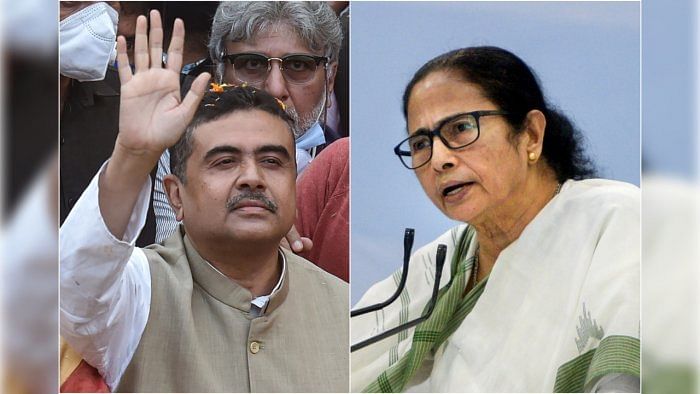
Identity politics and industrialisation have emerged as poll planks in West Bengals high-profile Nandigram seat, where Chief Minister Mamata Banerjee will contest her former lieutenant and BJP candidate Suvendu Adhikari.
In a constituency where 30 per cent minority votes can influence the results, both the BJP and TMC are also engaged in competitive Hindutva to woo the majoritarian community.
The obscure agrarian region in Purba Medinipur district had shaken the foundation of the mighty Left Front regime through an anti-land acquisition movement in 2007 that had ultimately catapulted the TMC to power in 2011. The then two prominent faces of the stir, Banerjee and Adhikari, will now contest each other in the second of the eight-phase elections on April 1.
The CPI(M), with its young candidate Minakshi Mukherjee, is seeking to regain its ground lost to the BJP. Apart from communal polarisation, the constituency is also witnessing the insider-outsider debate. However, here, Banerjee, who has used the plank to label BJP as party of outsiders, is facing the flak as Adhikari is projecting himself as a Bhoomiputra (son of soil) and the TMC chief as an outsider from Kolkata.
Banerjee, who lives in Kalighat area of the metropolis, has left her Bhowanipore constituency in the city to battle her former cabinet minister in Nandigram. To counter the outsider label, Banerjee has branded her former confidante Adhikari as Mir Jafar, a commander of Bengals last independent nawab Siraj ud-Daula who had betrayed the ruler at the Battle of Plassey leading to the East India Company's victory.
Ironically, political parties of all hues are now promising industrialisation in the region, that had tooth- and-nail opposed a chemical hub in the area proposed by the Left Front, so that people dont have to migrate to other places for employment.
Parties other than the TMC and BJP, however, feel that the electoral tussle in Nandigram has become a prestige issue and personal fight for both Adhikari and Banerjee over the legacy of the anti-land acquisition movement.
Nandigram had never before witnessed such communal polarisation as is being seen during the electoral contest between Banerjee and Adhikari, in which minority votes will play a key role, local SUCI(C) Bhabani Prasad Das said.
Two contrasting murals on a mud wall one of Jai Shri Ram slogan and the other of Adhikari dressed as Mir Jafar bowing before the BJP -- sums up the political mood in the constituency.
An Islamic cleric of a mazaar said Muslims will vote wisely as the choice is tough. "On one hand, Suvendu has been one of our own for many years, while on the other, Mamata di had stood by us like a rock during the movement days. The choice will be tough," he said.
For Adhikari, the electoral battle is that of political survival as defeat will likely stunt his growth in his new party, while victory will establish him as one of the tallest leaders in the state and push him ahead in the tussle for the chief ministers post if BJP attains a majority in the 294-member assembly. For Banerjee, who is running for a third term as the chief minister, victory is essential not only to lead the government but also to keep her party together in the face of an unprecedented exodus.
Nandigram has 2,57,299 voters, of which 1,33,323 are males and 1,23,975 females. The assembly segment comprises two blocks -- Nandigram I and Nandigram II -- with the first having 35 per minority population and the second almost 15 per cent.
Adhikari has claimed that Banerjee is fighting the polls from the seat as she believes the TMC will pocket the entire monitory vote share.
"Out of 2,57,299 voters, around 68,000 are from the minority community. She thinks people of the minority community will vote for her. But I firmly believe that Hindus, who are against her brand of appeasement politics, will vote for me," he had said. With identity politics taking centre-stage in the Nandigram election campaign, Banerjee has been using soft Hindutva to counter Adhikari's aggressive Hindutva campaign.